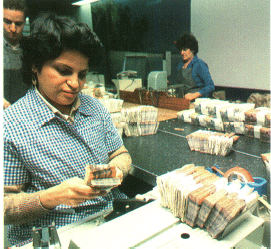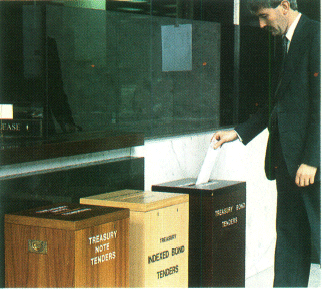Reserve Bank of Australia Annual Report – 1985 Staff
Further deregulation of the financial system, including the decision to expand the number of banks, continued to provide new challenges for the staff of the Bank. The Board appreciates the dedicated and professional manner in which these challenges were met and shares with the staff satisfaction with the achievements of the year.
There were 3,599 members of staff at 30 June 1985, 109 fewer than a year earlier. As well as deregulation, technical change in banking services and changes in demand for services provided by the Bank, as discussed in earlier sections of this Report, have continued to influence the scope of the Bank's activities and therefore the work of the staff in 1984/85. Perhaps the most important development from a staffing viewpoint was the development of the separate Supervision Unit within the Bank to handle the technical aspects of the entry of new banks and to focus on prudential supervision of banks as a continuing activity. Coin handling, rural credits lending and note printing activities on the other hand absorbed fewer staff than in 1983/84.
The distribution of staff according to activity and location is given in the table on page 58. The figures for 30 June 1985 include 131 staff on extended leave (including confinement and maternity leave), 5 on secondments to other organisations in Australia and overseas and 17 on full-time study leave.
The Bank expanded its programmes of staff training during the year, including a range of short courses for new recruits and courses on staff supervision and management. In addition, two short but intensive courses on the objectives and activities of the Bank have been introduced for more senior officers. Specialist courses were held on topics such as audit and records management.
The Bank is committed to equal opportunity in employment. As a result of a wide-ranging review conducted during the past year the Bank changed its procedures in several areas. A co-ordinator of EEO has been recruited and formal machinery to support the principles of EEO in recruitment and use of staff resources has been established.
The Bank has long-standing arrangements for staff to participate in the making of decisions on personnel matters. These include: classification of positions within the Bank; appeals against promotions; occupational health and safety; superannuation; and the introduction of new technology. The staff will also be represented on a committee concerned with the operation of equal opportunity within the Bank.
In 1984/85 there was a substantial increase in the incidence of repetitive-strain injury, particularly among operators of keyboard equipment. A detailed study of work of this kind within the Bank is being undertaken by consultants. A programme of appropriate work practices is also being instituted.
Mr.L.T. Hinde, the Bank's most senior Adviser, retired on 11 July 1985. Mr.M.J.Phillips has been appointed to a new position of Chief Administrative Officer. Mr.Phillips will directly assist the Governor and Deputy Governor over a range of the Bank's activities. The administrative and senior staff structure which follows reflects this and other changes.
| At 30 June | |||
|---|---|---|---|
| Staff classified by: | 1983 | 1984 | 1985 |
| Activity | |||
| Services to customers | |||
| –banking | 1,649 | 1,673 | 1,607 |
| –inscribed stock registries | 296 | 298 | 306 |
| Note printing | 653 | 625 | 585 |
| Administration of monetary and banking policy | 486 | 309 | 321 |
| Personnel, Accounting and other supporting functions | 743 | 803 | 780 |
| Location | |||
| Note Printing Branch | 653 | 625 | 585 |
| Other branches | 1,937 | 1,906 | 1,845 |
| Head Office | 1,237 | 1,177 | 1,169 |
| Total | 3,827 | 3,708 | 3,599 |






